Founded in 1729, the champagne maison Ruinart has opened a new pavilion, “4 RUE DES CRAYÈRES,” at its headquarters in Reims, France. Designed by Japanese architect Sou Fujimoto, this pavilion emphasizes sustainability and local resources. This facility symbolizes Ruinart’s long history and its commitment to a sustainable future, standing as a new landmark where tradition and innovation harmoniously blend.
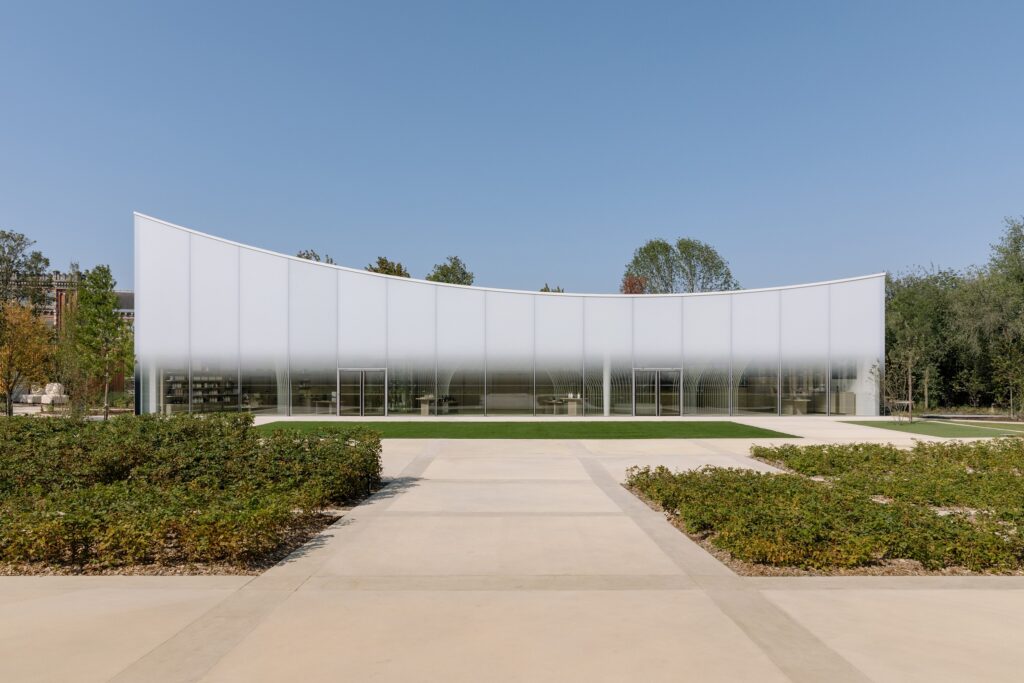
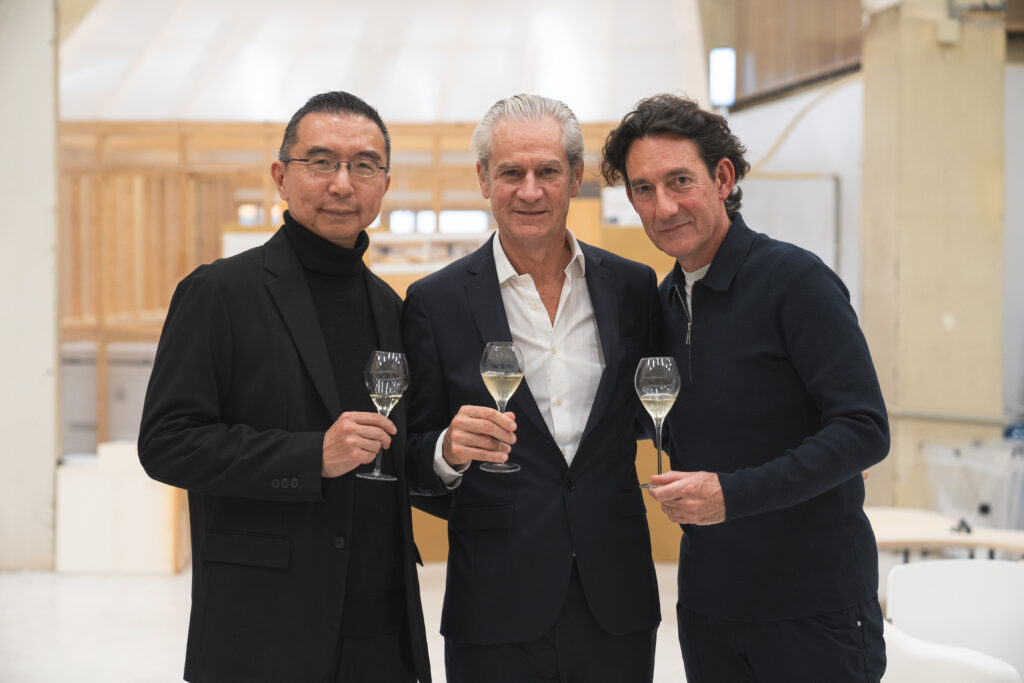
- A Fusion of History and Future, with Natural and Sustainable Materials
- Sou Fujimoto’s Design Philosophy and Vision for the Future
- Interior Design that Embodies Art by Gwenael Nicolas
- Landscape Design Inspired by Harmony with Nature by Christophe Gautrand
- A New Symbol Connecting Ruinart’s History to a Sustainable Future
A Fusion of History and Future, with Natural and Sustainable Materials
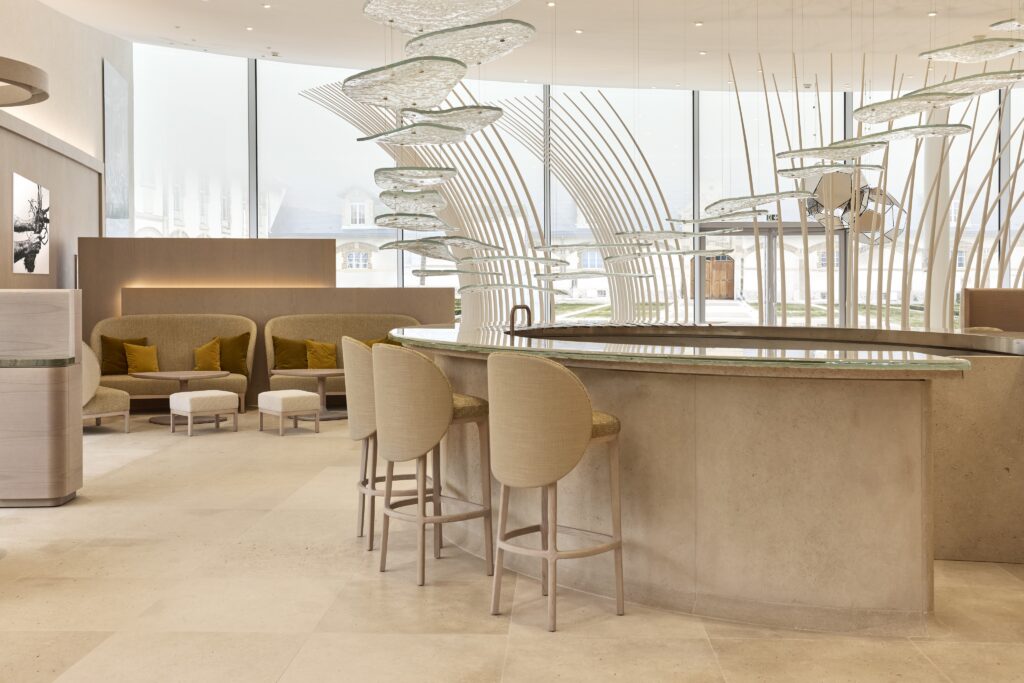


Ruinart, deeply rooted in the Champagne region, has almost three centuries of history. Its birthplace, “4 Rue des Crayères,” is a symbolic site from where Ruinart’s bottles are shipped worldwide and embodies the brand’s identity. Now, a new pavilion has been added to this historic location, designed by Sou Fujimoto, known for his work that dialogues with nature.
The pavilion uses local Reims stone, “Soissons stone,” as its primary material, along with abundant use of natural materials such as wood, allowing the entire facility to harmonize with the surrounding environment. The building is designed to self-generate 80% of its energy through rainwater usage, solar, and geothermal energy. From the large windows inside, visitors can enjoy views of the gardens, creating a seamless sense of openness between the exterior and interior. Natural light entering through the windows spreads throughout the space like champagne bubbles, adding an elegant atmosphere to the pavilion.
Sou Fujimoto’s Design Philosophy and Vision for the Future
Fujimoto emphasized “how to express the elegance and savoir-faire of a historic maison in contemporary architecture,” completing the design after nearly three years of collaboration. He focused on balancing East and West, past and future, and tradition with innovation, aiming for a space where visitors can feel the spirit of Ruinart as nature and architecture come together seamlessly.
The space from the entrance to the courtyard is designed as a single sequence, inviting visitors to experience Ruinart’s history and, at the same time, be drawn toward the future. The pavilion’s curved design, inspired by champagne bottles and bubbles, expresses lightness and elegance, as seen from the garden.
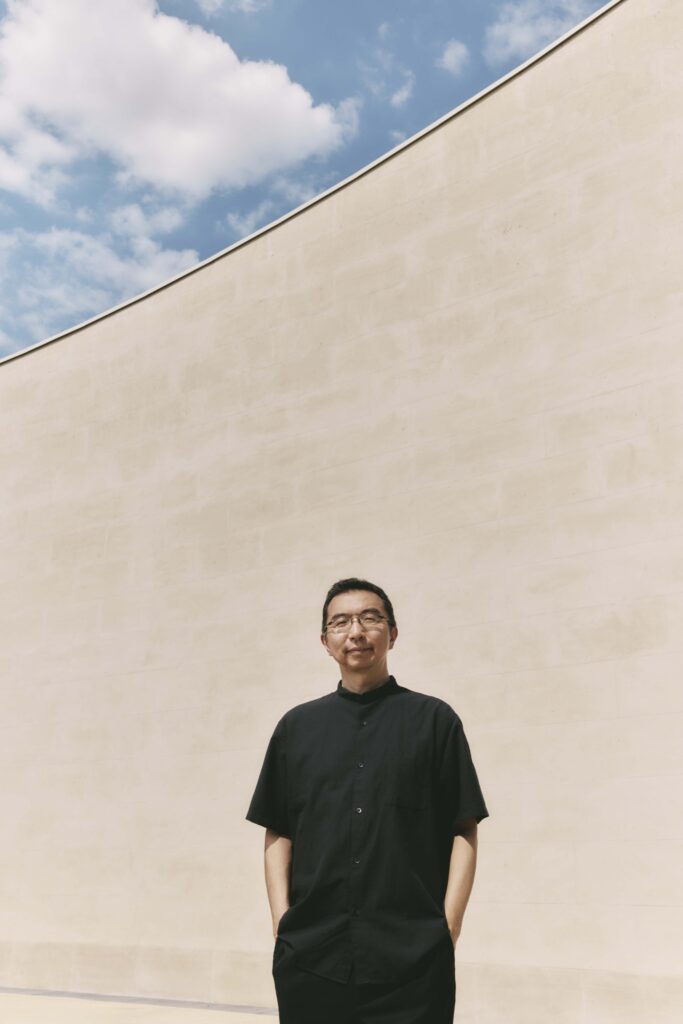
Sou Fujimoto
Sou Fujimoto, born in Hokkaido in 1971, is one of Japan’s leading architects. After graduating from the University of Tokyo’s Faculty of Architecture, he established his office, Sou Fujimoto Architects, in 2000, and later opened “Sou Fujimoto Atelier Paris” in 2016. His office, which employs more than 50 staff of various nationalities, specializes in architecture, urban planning, and innovation, with numerous competition wins and prestigious international awards. Fujimoto’s unique vision and commitment to Ruinart’s architectural goals and sustainability are fully embodied in this project.
Interior Design that Embodies Art by Gwenael Nicolas
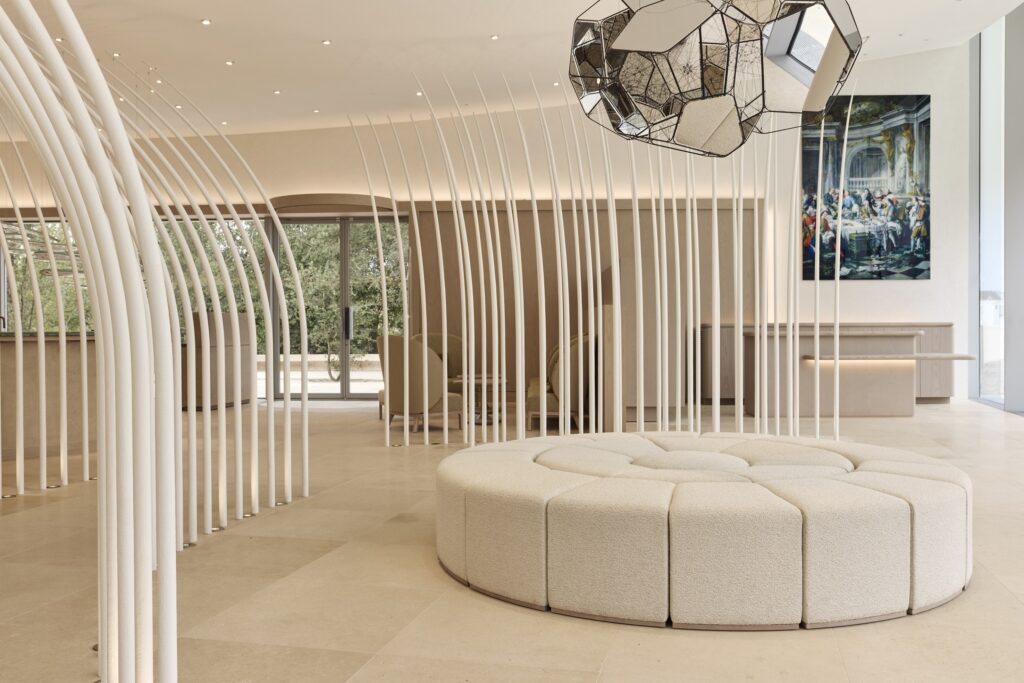
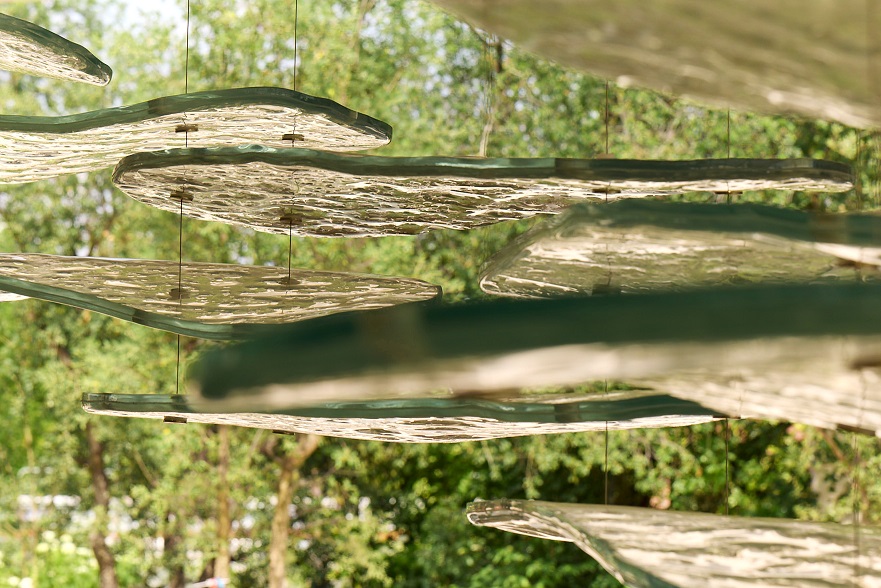
Interior designer Gwenael Nicolas crafted the interior space of the pavilion to emphasize its role as a “pathway to the future.” As visitors move from the entrance further inside, they experience a skillful blend of modernity and tradition, allowing them to freely explore and immerse themselves in the world of Ruinart. This space retains the noble elegance of a champagne maison, while evoking a sense of harmony and relaxation with nature.
Nicolas noted that “the greatness of Maison Ruinart lies in its forward-thinking spirit,” with meticulous attention to materials and the flow of space. The flowing design lines and the way natural light penetrates the interior resemble the continuous bubbles in champagne. Tall, stem-like decorations, as well as white island-shaped sofas, are carefully placed, and the space is designed to reveal different perspectives and expressions with each step, immersing visitors in the unique ambiance.

Gwenael Nicolas
In 1998, Gwenael Nicolas founded “CURIOSITY INC.” in Tokyo, a city that embraces traveling through time rather than space. Nicolas has developed new materials, languages, and identities, working creatively and thoughtfully with various luxury brands, companies, and clients to offer both aesthetic and functional solutions.
Landscape Design Inspired by Harmony with Nature by Christophe Gautrand
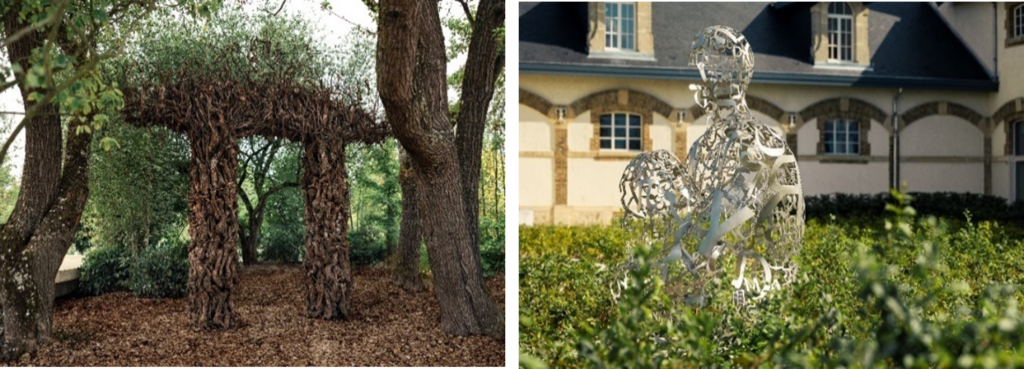

The entire grounds of the pavilion reflect the natural environment of the Champagne region, designed by landscape artist Christophe Gautrand. A protected forest area of approximately 5,000 square meters is part of the 7,000-square-meter site, with diverse plantings, including beech and maple trees, as well as cork oak, which was planted here for the first time in the Champagne region. The cork oak symbolizes an innovative approach to carbon absorption and climate resilience.
The garden is not merely for viewing but is designed as a pathway for visitors to explore and engage with nature. Gautrand describes the grounds as “a space where the spirit of Ruinart comes alive, awakening all five senses,” with pathways and designs that allow for a dialogue between nature and art. Furthermore, art installations throughout the garden reflect Ruinart’s historical connection to art, providing visitors with a multi-sensory experience of the maison’s values and vision.
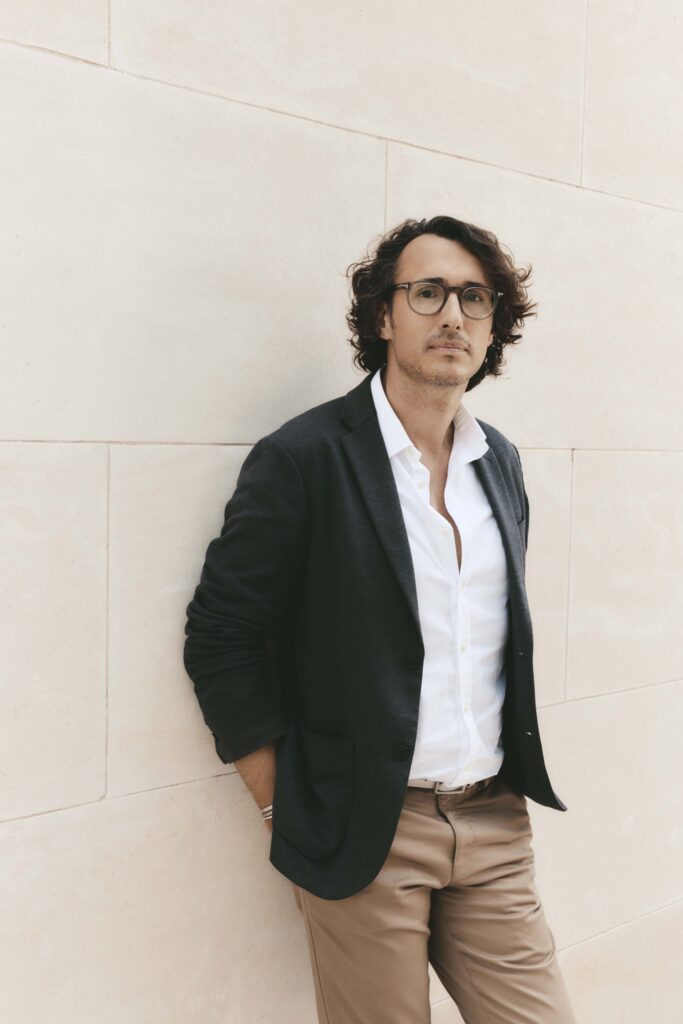
Christophe Gautrand
After graduating from the Ecole Nationale Supérieure de la Nature et du Paysage in Blois, France, Gautrand obtained his landscape architect qualification in 2007 and founded his own firm in 2012. In 2014, Benjamin Deschrier joined as co-manager. Gautrand’s projects bring plants into conversation with art, design, and architecture, creating influential designs in courtyards, gardens, suites, terraces, office patios, and event spaces.
A New Symbol Connecting Ruinart’s History to a Sustainable Future
Ruinart’s new pavilion, “4 RUE DES CRAYÈRES,” meets the French architectural standard “HQE (High Quality Environmental),” standing as a model for sustainable architecture that respects the natural environment. The facility merges traditional elements with new technologies, reflecting a strong commitment to reducing environmental impact.
This pavilion represents more than just a building; it is a new landmark that conveys Ruinart’s history, culture, and reverence for nature to visitors, while setting a pioneering example of sustainable architecture that will continue to attract attention in the future.
